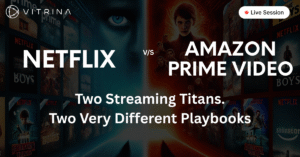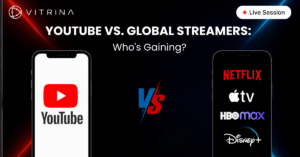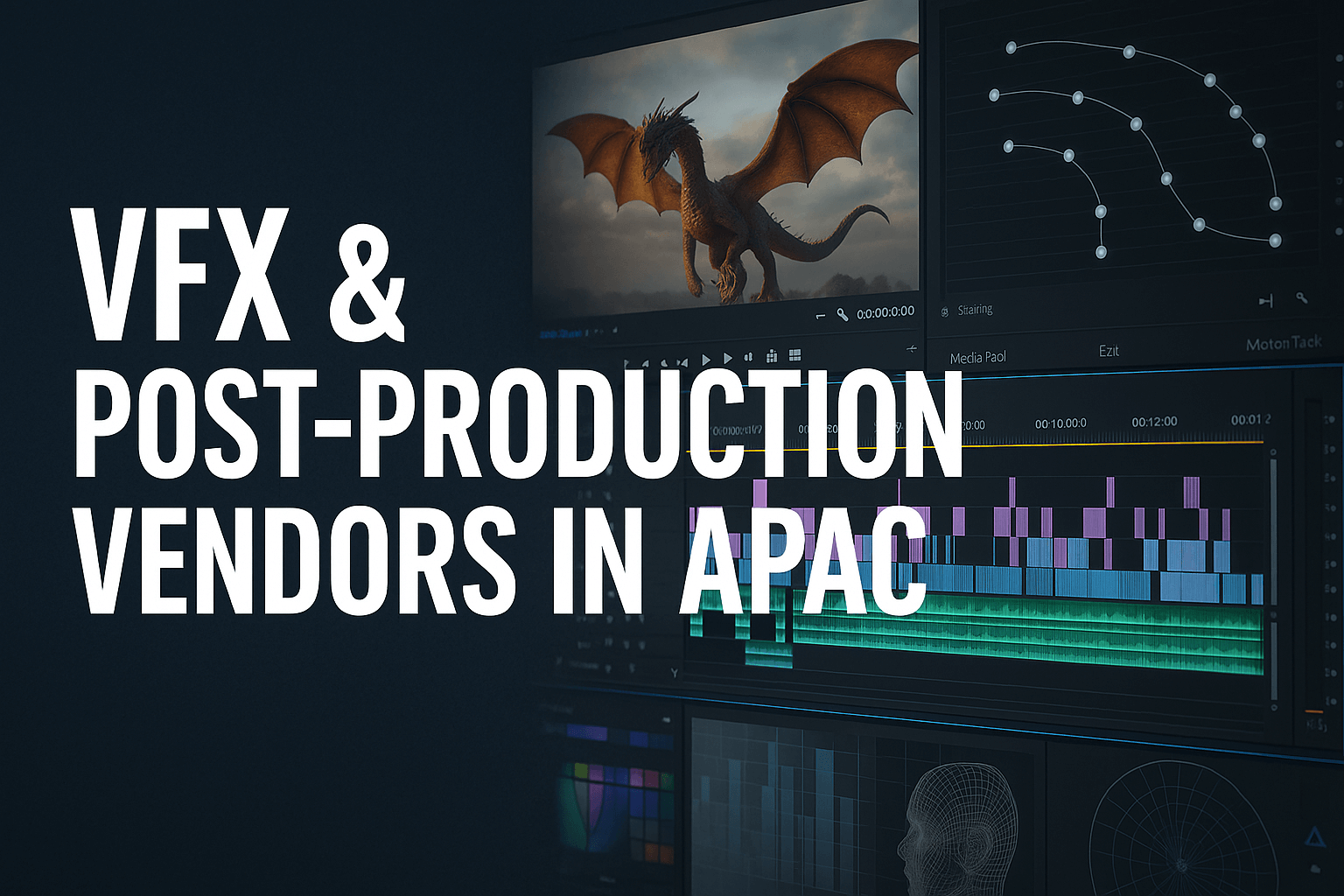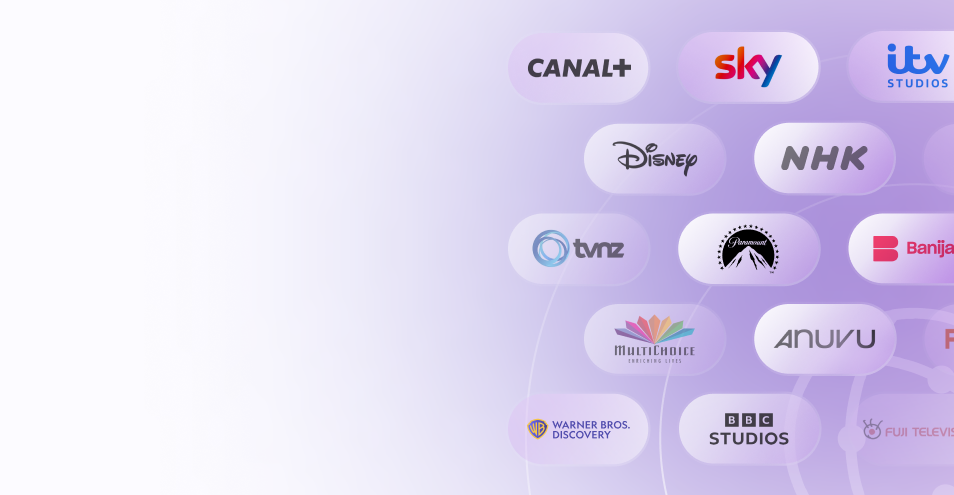Introduction
So, you’ve poured your heart, soul, and probably a lot of coffee into creating an amazing startup reality show. The concept is fresh, the characters are compelling, and you know it’s got “hit” written all over it. But now comes the big question: how do you get it out of your hard drive and onto screens worldwide? Navigating the complex world of distribution for startup reality shows, especially for creators from emerging markets, can feel like a maze.
But don’t you worry! This guide is here to light the way, helping you understand the landscape, prepare your pitch, find the right partners, and ultimately get your show seen by the audience it deserves. We’ll explore everything from traditional channels to the exciting new digital frontiers, ensuring you’re equipped with the knowledge to make your mark.
Table of content
- Introduction
- Key-Takeaways
- Cracking the Code: Understanding Distribution for Startup Reality Shows
- Prepping Your Pitch: Getting Your Startup Reality Show Ready for Buyers
- Finding Your Path: Navigating Distribution Channels and Partners
- Sealing the Deal: Mastering Distribution Agreements and Negotiations
- Going Global: International Co-Production and Market Adaptation
- Your Toolkit for Success: Networking and Leveraging Vitrina
- How Vitrina Champions Distribution for Startup Reality Shows
- Conclusion
- FAQs
Key Takeaways
| Understanding the diverse channels available for distribution for startup reality shows is crucial for success. |
| A polished pitch, including a strong concept, sizzle reel, and clear understanding of your show’s value, is non-negotiable. |
| Producers from emerging markets face unique challenges but also have unique opportunities in global content distribution. |
| Navigating distribution deals requires careful attention to financial models, legal terms, and negotiation strategies. |
| International co-productions and cultural adaptation can significantly broaden your show’s reach. |
| Leveraging platforms like Vitrina can connect you with essential partners and resources. |
Struggling with Startup Reality Show Distribution?

Cracking the Code: Understanding Distribution for Startup Reality Shows
Figuring out where and how to get your show seen is the first big step. The world of distribution for startup reality shows is always changing, so knowing your options is super important. It’s not just about getting on TV anymore; there are so many ways to reach viewers!
What are the top channels for distributing new reality shows?
When you’re thinking about getting your new reality show out there, you’ve got a mix of old-school and new-school options. Traditional television networks are still big players, offering wide reach. But don’t forget streaming services like Netflix or Hulu, which are hungry for fresh content. Then there are FAST channels (Free Ad-Supported Streaming TV), which are popping up everywhere and offer new avenues, especially for niche shows. Even online platforms and social media can play a role in your distribution strategy.
- Broadcast Television Networks (e.g., ABC, BBC)
- Cable Television Channels (e.g., Bravo, Discovery)
- Subscription Video on Demand (SVOD) (e.g., Netflix, Amazon Prime Video)
- Advertising-based Video on Demand (AVOD) (e.g., Tubi, Pluto TV)
- Free Ad-Supported Streaming TV (FAST) Channels
- Direct-to-consumer (DTC) apps or websites
| Channel Type | Typical Reach | Monetization Model | Producer Control |
|---|---|---|---|
| Traditional TV Networks | Potentially Very High | Advertising, Carriage Fees | Often Lower |
| Major Streaming Services (SVOD) | High / Global | Subscription Revenue (via license fee) | Varies, often involves exclusivity |
| FAST Channels / AVOD | Growing / Niche to Broad | Advertising Revenue Share | Can be Moderate to Higher |
| Direct-to-Consumer | Dependent on Marketing | Direct Sales, Subscriptions, Ads | Highest |
What hurdles do reality shows from emerging markets face in distribution?
If you’re a creator from an emerging market, you might bump into a few extra challenges. Sometimes, there’s a perception bias, or it might be tougher to get noticed by big international buyers. Budget limitations for marketing and travel to key industry events can also be a factor. Plus, making sure your show’s themes and stories resonate with a global audience, or can be easily adapted, is something to think hard about. But hey, unique stories from different cultures are also in demand, so it’s not all uphill!
- Limited access to established international buyers and networks.
- Perceived risk or lack of familiarity from distributors with content from certain regions.
- Smaller production budgets affecting perceived production value.
- Need for content localization and cultural adaptation for broader appeal.
- Navigating complex international rights and legal frameworks.
What are the current trends shaping reality show distribution?
The way reality shows get distributed is always evolving. One big trend is the power of data analytics – distributors and platforms are using viewer data to decide what to pick up. Niche content is also finding more opportunities, thanks to the explosion of targeted platforms. There’s a huge appetite for global formats that can be adapted for different countries. And, of course, the continued growth of digital distribution and direct-to-consumer models is giving producers more options than ever before. Staying on top of these trends can give your startup reality show an edge.
- Increased demand for diverse and authentic storytelling.
- Rise of unscripted content on FAST channels.
- Shorter series orders and more experimentation with formats.
- Emphasis on shows with strong social media engagement potential.
- Growth of co-productions to mitigate risks and expand reach.
Prepping Your Pitch: Getting Your Startup Reality Show Ready for Buyers
Okay, so you know the landscape. Now, how do you make your startup reality show shine when you’re talking to potential distributors? A killer pitch is your golden ticket. This means more than just a good idea; it’s about presenting a professional, well-thought-out package that screams “success!”
What makes a reality show format irresistible to distributors?
Distributors are looking for shows that aren’t just good, but are also a good business bet. A unique and clear concept is a must – what makes your show different? Strong, relatable, or captivating characters are the heart of any reality show. They also love formats that are scalable (meaning they could have multiple seasons) and adaptable (could it work in other countries or with different casts?). Think about a format that has a clear hook and a satisfying emotional journey for the viewer.
- A fresh, original concept with a clear hook.
- Compelling, authentic characters or participants.
- Potential for multiple seasons and spin-offs (franchise potential).
- Clear target audience and proven appeal (if possible, through a pilot or taster).
- A format that is easy to understand and pitch.
| Pitch Element | Key Considerations |
|---|---|
| Logline & Synopsis | Clear, concise, and compelling summary. |
| Format Document/Bible | Detailed explanation of show structure, rules, style. |
| Sizzle Reel/Taster Tape | Visually engaging, showcases the energy and characters. (Max 2-3 mins) |
| Key Creative Team Bios | Highlight relevant experience and passion. |
| Potential Audience & Comparables | Show market understanding and success parallels. |
| Budget Top Sheet (if applicable) | Realistic understanding of production costs. |
How do you build a killer pitch deck and sizzle reel for your reality show?
Your pitch deck is your show’s resume. It should be visually appealing and tell a clear story. Include your logline, format details, character bios, why it’s unique, and who your target audience is. As for the sizzle reel, this is your chance to show, not just tell. It needs to be short (usually 2-3 minutes), high-energy, and capture the essence and excitement of your show. Think of it as a movie trailer for your reality series. Professional quality here makes a huge difference.
- Pitch Deck: Keep it concise (10-15 slides max), visually engaging, and easy to read.
- Sizzle Reel: Focus on the most exciting moments, compelling characters, and unique aspects of your format. Music and editing are key.
- Clearly articulate the show’s unique selling proposition (USP).
- Include information on your team and their track record, if any.
- Practice your verbal pitch to accompany these materials.
How can you safeguard your reality show concept during distribution talks?
It’s natural to be a bit nervous about sharing your brilliant idea. While ideas themselves are hard to “own” legally, the specific expression of that idea in your format bible, scripts, or sizzle reel can be protected by copyright. Before you share widely, consider registering your format with relevant bodies if possible in your country. Using Non-Disclosure Agreements (NDAs) can offer some protection, though not all companies will sign them. Always keep a paper trail of who you’ve pitched to and when. Clearly marking your materials with “Confidential” or a copyright notice is also a good practice.
- Register your written format/treatment with copyright offices where available.
- Use Non-Disclosure Agreements (NDAs) when appropriate and possible.
- Keep detailed records of who you pitch to and when.
- Watermark visual materials if sharing digitally before a deal.
- Clearly state “Confidential” and your copyright on all documents.
Finding Your Path: Navigating Distribution Channels and Partners
With a polished pitch in hand, it’s time to find the right home for your startup reality show. This part of the distribution for startup reality shows journey involves identifying suitable partners, from traditional distributors to newer digital platforms, and understanding how they operate.
What exactly does a distributor do for a startup reality show?
Think of a distributor as your show’s sales and marketing agent for the global (or regional) market. They have established relationships with buyers at TV networks, streaming services, and other platforms. Their job is to take your finished show (or format) and license it to these buyers. They handle the sales process, negotiate deals, manage marketing materials for buyers, and often provide market intelligence on what’s selling and where. For a percentage of the revenue (or a fee), they leverage their network and expertise to get your show seen and monetized.
- Develop a sales and marketing strategy for your show.
- Pitch your show to broadcasters, streamers, and other platforms worldwide.
- Negotiate licensing deals and contracts.
- Handle the delivery of materials to buyers.
- Collect and remit revenues to you (the producer).
- Attend major content markets (like MIPCOM, NATPE) on your behalf.
| Aspect | Pros of Using a Distributor | Cons of Using a Distributor |
|---|---|---|
| Market Access | Established relationships, wider reach | Can be hard to get attention from top distributors |
| Expertise | Knowledge of market trends, deal terms | May not prioritize smaller/niche shows |
| Sales & Marketing | Dedicated sales efforts, marketing materials | Distributor’s commission/fees reduce your share |
| Time & Effort | Saves you from direct sales grind | Less direct control over sales process |
How are streaming giants like Netflix and Amazon acquiring startup reality formats?
The big streaming services like Netflix, Amazon Prime Video, and others are constantly on the lookout for fresh, engaging unscripted content. They often have teams dedicated to sourcing new shows, including reality formats. While some have official submission portals (though these can be competitive), many acquisitions come through established producers, agents, or distributors. They are particularly interested in shows with strong international appeal, unique voices, and the potential to create buzz. Having a proven concept, even a strong pilot or a very well-developed pitch, can help you get on their radar.
- Looking for content with global appeal and diverse perspectives.
- Often work through established production companies, agents, or distributors.
- May have specific mandates or content needs for different territories.
- Value strong storytelling, unique access, and high production values.
- Increasingly open to direct pitches if the concept is compelling and well-packaged.
Are FAST channels a viable option for new unscripted content?
Absolutely! FAST channels (Free Ad-Supported Streaming TV) are a booming area and offer a fantastic opportunity for distribution for startup reality shows. These channels, found on platforms like Pluto TV, Tubi, Roku Channel, and Samsung TV Plus, often look for library content or new originals to fill their schedules. For indie producers, FAST channels can be a more accessible route to an audience compared to traditional networks or major SVODs. Monetization is typically through a share of advertising revenue. It’s a great way to get your show out there, build viewership, and potentially attract attention from larger players.
- Lower barrier to entry compared to traditional TV or SVODs.
- Opportunity to reach audiences on smart TVs and connected devices.
- Revenue share model based on advertising.
- Good for niche content or shows with an existing library.
- Can help build a track record and audience for your content.
Ready to Go Global with Your Reality Show?

Sealing the Deal: Mastering Distribution Agreements and Negotiations
You’ve found an interested party – fantastic! Now comes the crucial stage of negotiating the distribution agreement. This is where the terms of how your startup reality show will be sold, for how long, and how you’ll get paid are decided. It’s vital to understand the key elements and negotiate wisely.
What are smart strategies for negotiating reality show distribution deals?
Negotiation is a bit of an art and a science. The first rule is: know your show’s value. Research comparable deals if you can. Be clear on your must-haves versus your nice-to-haves. Don’t be afraid to ask questions and seek clarification on any terms you don’t understand. It’s often wise to have legal counsel with M&E experience review any agreement. Aim for a win-win; a good partnership benefits both sides. Key areas to focus on include the scope of rights granted, the term of the agreement, financial terms, and reporting obligations.
- Clearly define the rights being granted (e.g., territories, platforms, exclusivity).
- Negotiate the term (length) of the agreement and renewal options.
- Understand the distribution fee or revenue share percentage.
- Clarify marketing commitments and expense recoupment.
- Ensure there are clear reporting and payment schedules.
- Retain rights where possible (e.g., sequel rights, certain territories).
| Key Deal Term | What to Watch For |
|---|---|
| Territory | Is it worldwide, specific regions, or countries? Try to limit if you can exploit other territories yourself or via another partner. |
| Term (Duration) | How long does the distributor have the rights? Are there performance clauses for renewal? (e.g., 3-7 years is common). |
| Rights Granted | Which rights are included? (e.g., TV, SVOD, AVOD, theatrical, ancillary). Be specific. |
| Distribution Fee/Revenue Share | What percentage does the distributor take? (e.g., 20-40% is common). Is it on gross or net revenue? |
| Minimum Guarantee (MG) / Advance | Is there an upfront payment? This is less common for unproven startup shows but always worth asking. |
| Expenses | Which distribution expenses can be recouped by the distributor before you see revenue? Cap these if possible. |
| Reporting & Audit Rights | How often will you receive reports and payments? Can you audit their books? |
What are common financial models in reality show distribution?
Understanding how the money flows is key. A common model is a revenue share, where the distributor takes a percentage of the income generated from licensing your show, after recouping agreed-upon expenses. Another is a licensing fee, where a platform pays a flat fee for the right to air your show for a specific period. Sometimes, especially for more established producers or highly anticipated shows, a distributor might offer a Minimum Guarantee (MG) or an advance against future earnings. For startup reality shows, a straightforward revenue share is often the starting point.
- Revenue Share: Producer and distributor split revenues based on an agreed percentage (e.g., 70/30, 60/40) after deduction of distribution expenses.
- License Fee: A flat payment from a platform (e.g., broadcaster, streamer) for specific rights for a set term.
- Minimum Guarantee (MG): An upfront payment from the distributor, recoupable against future revenue shares. More common for proven content.
- Distribution Advance: Similar to an MG, an upfront payment advanced by the distributor.
- Service Deal: Producer pays the distributor a fee to distribute, and the producer keeps a higher percentage of revenues.
What legal pitfalls should producers watch out for in distribution agreements?
Distribution agreements can be complex legal documents. Be wary of overly broad grants of rights (e.g., “all rights, worldwide, in perpetuity”). Ensure the definition of “net receipts” (if that’s what your share is based on) is clear and fair regarding deductible expenses. Pay attention to audit rights (your ability to check their accounting) and termination clauses (how and when the agreement can end). If you’re not comfortable with legal language, investing in a lawyer who specializes in entertainment law can save you a lot of headaches down the road. They can spot unfair terms or ambiguities.
- Vague or overly broad definitions of “Rights” or “Territory.”
- Uncapped distribution expenses that can erode your share of revenue.
- Lack of clear reporting obligations or infrequent payment schedules.
- Cross-collateralization clauses (where losses from one show/territory offset profits from another) without your full understanding.
- No clear way to terminate the agreement if the distributor isn’t performing.
- Ambiguity around who owns derivative rights or format rights.
Going Global: International Co-Production and Market Adaptation
For many startup reality shows, thinking globally from the get-go can open up huge opportunities. This might involve looking for international partners for co-production or carefully considering how your show can be adapted for different cultures to maximize its distribution for startup reality shows potential.
How can international co-productions help get your reality show made and distributed?
An international co-production is when producers from two or more countries team up to create a show. This can be a game-changer! It can help you access funding from different territories (like tax incentives or broadcast pre-sales in a partner’s country). It also brings diverse creative perspectives and can automatically open doors to distribution in the co-producing partners’ markets. It’s a way to make bigger, more ambitious shows and share the risk.
- Access to multiple funding sources (e.g., tax credits, subsidies, broadcaster commitments in partner countries).
- Shared creative input and resources.
- Built-in access to the co-producing partners’ home markets for distribution.
- Can increase the overall budget and production value of the show.
- Often leads to content with broader international appeal.
| Method | Description | Potential Sources |
|---|---|---|
| Industry Markets & Events | Dedicated co-production forums and networking opportunities. | MIPCOM, IDFA Forum, Hot Docs Forum, Sunny Side of the Doc. |
| Online Platforms | Databases and communities connecting producers. | Vitrina, Cinando, The Film Collaborative. |
| Film Commissions & Funding Bodies | Often promote co-production and can connect producers. | National and regional film agencies. |
| Personal Networking | Building relationships with producers in other countries. | Industry contacts, referrals. |
How do cultural differences impact distributing reality shows in new territories?
What’s hilarious or heartwarming in one culture might be confusing or even offensive in another. When distributing your reality show internationally, cultural sensitivity is key. This might mean making small edits (like dubbing or subtitling), or it could involve more significant adaptations if you’re selling the format. Understanding local customs, humor, social norms, and even censorship rules in different territories is crucial. Researching your target markets or working with local partners can help you navigate these nuances successfully.
- Language barriers: Need for accurate dubbing or subtitling.
- Humor: What’s funny in one culture may not translate.
- Social norms and values: Depictions of relationships, family, or sensitive topics may need careful handling.
- Pacing and storytelling conventions: Audiences in different regions may prefer different styles.
- Censorship and regulatory requirements: Content restrictions vary widely.
Your Toolkit for Success: Networking and Leveraging Vitrina
Beyond a great show and a solid pitch, building connections and using the right tools can significantly boost your efforts in securing distribution for startup reality shows. This is where networking and platforms like Vitrina come into play.
Which industry events are must-attends for reality show distribution deals?
Content markets are where the deals happen! Attending major industry events can put you face-to-face with distributors, broadcasters, and platform executives from around the world. Key markets for unscripted and reality content include MIPCOM (Cannes, France), MIPTV (Cannes, France), NATPE Global (USA), and Realscreen Summit (USA). There are also more specialized factual and documentary markets like Hot Docs (Canada) or Sunny Side of the Doc (France). Even if you can’t attend them all, being aware of them and who attends can help your research.
- MIPCOM / MIPTV: Major international markets for all genres, strong for formats.
- NATPE Global: Key market for the Americas, strong unscripted presence.
- Realscreen Summit: Premier global event specifically for non-fiction and reality entertainment.
- Regional markets like ATF (Asia TV Forum & Market) or DISCOP (Africa).
- Specialized documentary festivals with industry components like IDFA (Netherlands) or CPH:DOX (Denmark).
How can producers effectively build relationships with international buyers?
It’s not just about what you know, but who you know – and more importantly, who knows and trusts you. Building relationships with international buyers takes time and effort. Do your homework: research what kind of shows a buyer or platform acquires. Try to get warm introductions if possible. When you do connect, be professional, concise, and respectful of their time. Follow up politely, but don’t be a pest. The goal is to build long-term relationships, not just make a one-time sale.
- Research buyers thoroughly: understand their needs, recent acquisitions, and programming slots.
- Attend industry markets and networking events.
- Utilize online platforms and databases to identify and connect with potential buyers.
- Request meetings in advance of markets, with a clear, concise pitch.
- Follow up professionally and persistently, but respectfully.
- Build your own network of fellow producers who can offer insights and introductions.
How Vitrina Champions Distribution for Startup Reality Shows
Navigating the global M&E marketplace can be daunting, especially for emerging creators. That’s where Vitrina steps in. As a comprehensive platform, Vitrina is designed to connect content creators, producers, distributors, and buyers, making the discovery and transaction process more efficient. For producers of startup reality shows, Vitrina offers a valuable space to showcase your projects to a global audience of potential partners. By listing your unscripted format or completed show on Vitrina, you increase its visibility among decision-makers actively seeking new content. Furthermore, Vitrina’s Project Tracker and market intelligence tools can help you identify suitable distributors, understand market trends, and find companies that have a track record with shows like yours. It essentially acts as a powerful searchlight, helping you find the right avenues for distribution for startup reality shows and connect with partners who can take your content to the next level.
- Provides a global platform to showcase your startup reality show to buyers and distributors.
- Helps you discover and research potential distribution partners based on their acquisition history and needs.
- Offers market intelligence and insights into current trends in unscripted content.
- Facilitates connections within the M&E ecosystem, reducing the friction in finding partners.
- Supports creators from emerging markets in gaining visibility on an international stage.
Conclusion
Getting your startup reality show off the ground and onto screens is a journey filled with challenges, but also immense rewards. From crafting that killer concept to understanding the nuances of distribution for startup reality shows, every step is crucial. Remember that the global appetite for fresh, engaging unscripted content is strong, especially for unique voices from emerging markets. By preparing meticulously, understanding the landscape, networking strategically, and leveraging tools like Vitrina, you can significantly increase your chances of finding the right partners and seeing your vision come to life for audiences worldwide. Stay persistent, stay creative, and believe in your show!
Ready to take the next step and find the perfect partners for your startup reality show? Don’t let your amazing content sit unseen. Sign up for Vitrina today and connect with a global network of distributors and buyers eager to discover the next big hit. Your audience is waiting!
Frequently Asked Questions
The first step is to have a fantastic, well-developed concept and a compelling pitch package. This includes a clear format bible, a dynamic sizzle reel, and an understanding of your target audience and unique selling points. Without a strong creative package, it’s hard to attract distributors.
Self-distribution (e.g., via your own website, YouTube, or direct deals with smaller platforms) is possible and gives you more control. However, it requires significant marketing effort, technical know-how, and time. For broader reach and access to major platforms or international markets, a traditional distributor often has the established relationships and resources that are hard for an individual producer to replicate.
You generally don’t “pay” a distributor upfront in the traditional sense. Most distributors work on a commission basis, taking a percentage (e.g., 20-40%) of the revenue they generate from selling your show, after recouping agreed-upon expenses (like marketing materials, travel to markets, etc.). The main “cost” to you is this revenue share and potentially some upfront costs for creating top-notch pitch materials.
Vitrina acts as a global marketplace and intelligence platform. You can list your unscripted format, making it visible to distributors actively searching for new content. Vitrina’s database also allows you to research and identify distributors who specialize in reality TV or have acquired similar shows, helping you target your outreach more effectively. It’s a tool to enhance your visibility and connection efforts. You can explore companies like Keshet International or All3Media International who are known for formats, and see if they are looking for content like yours via the platform.




























































